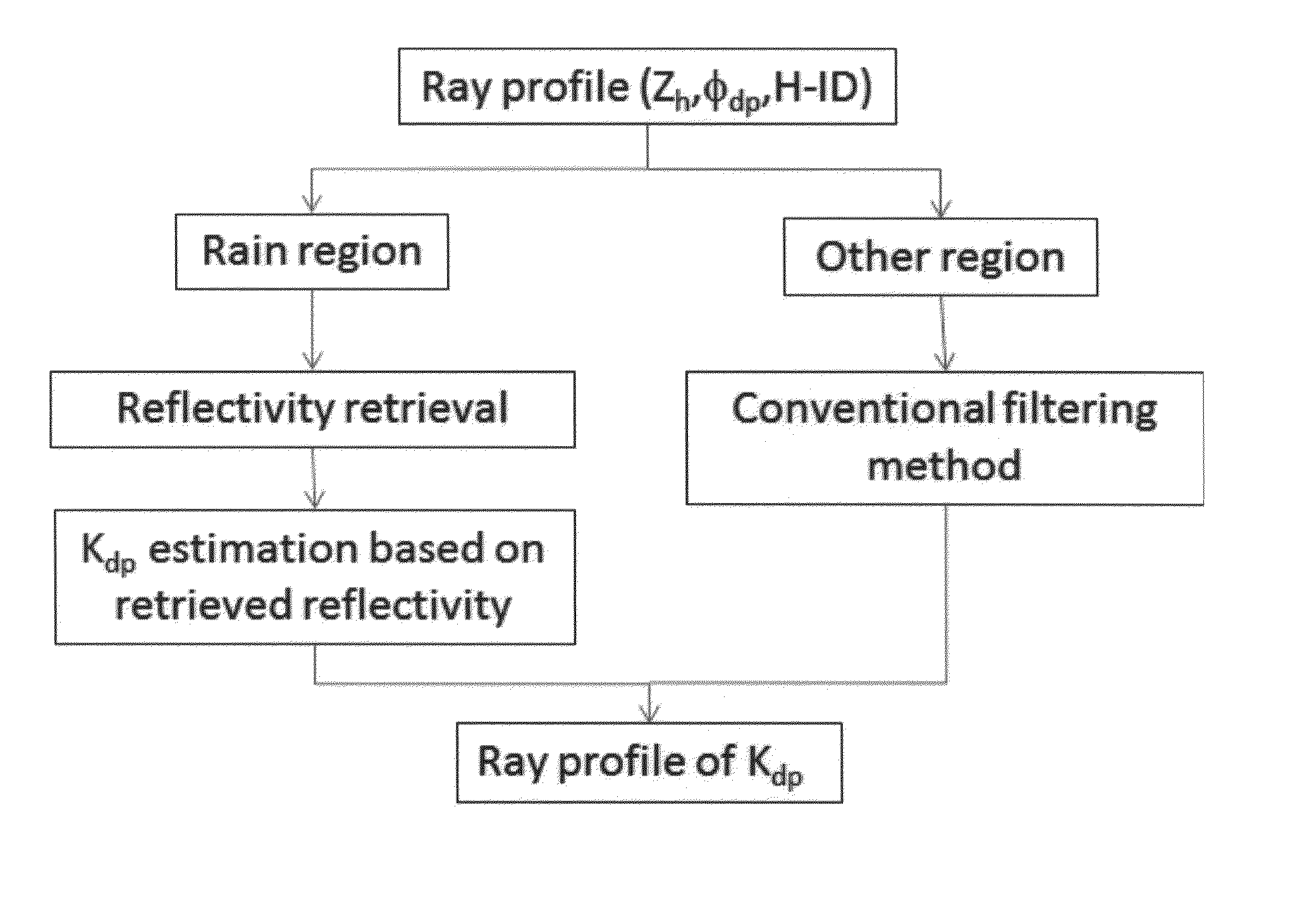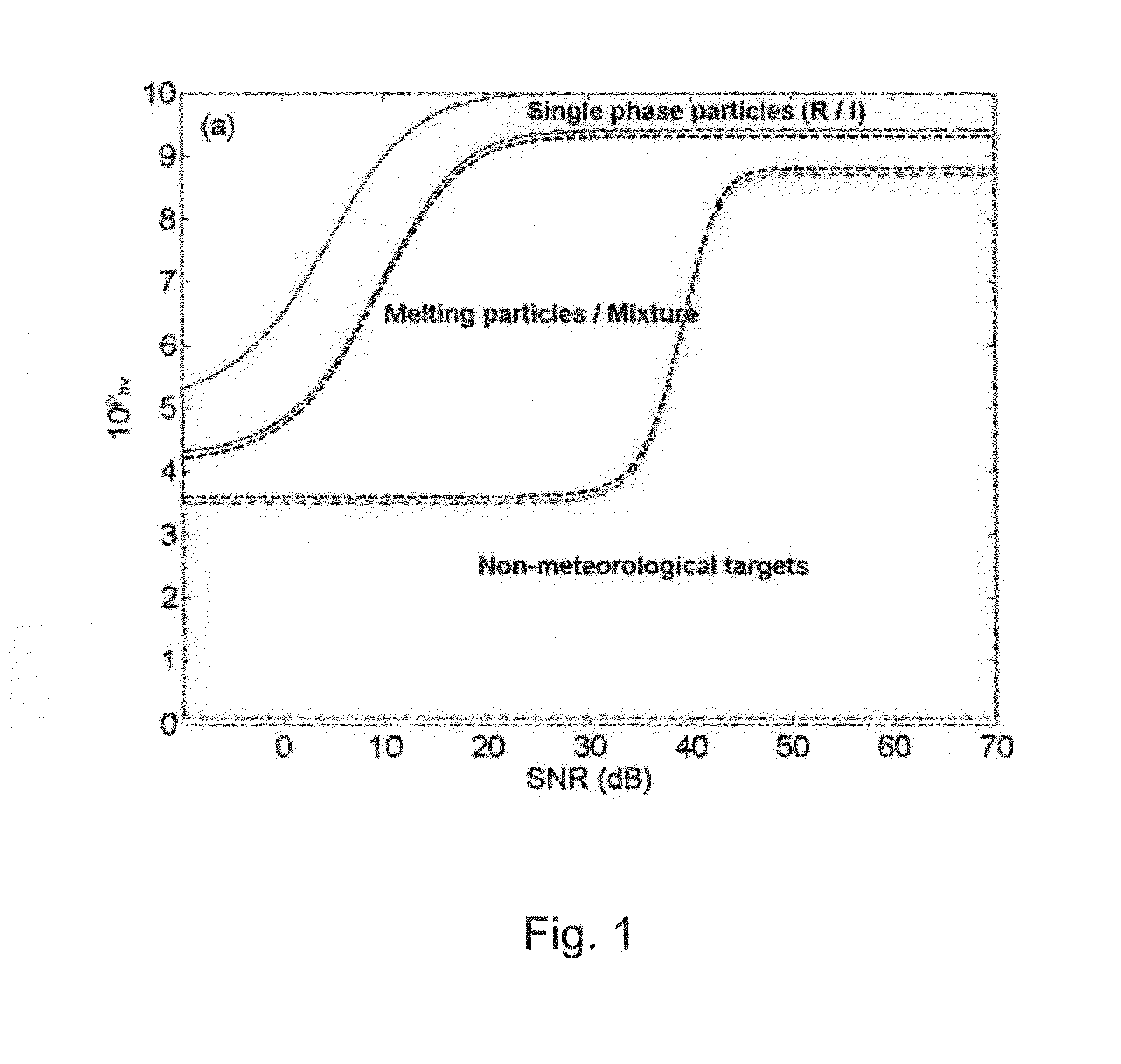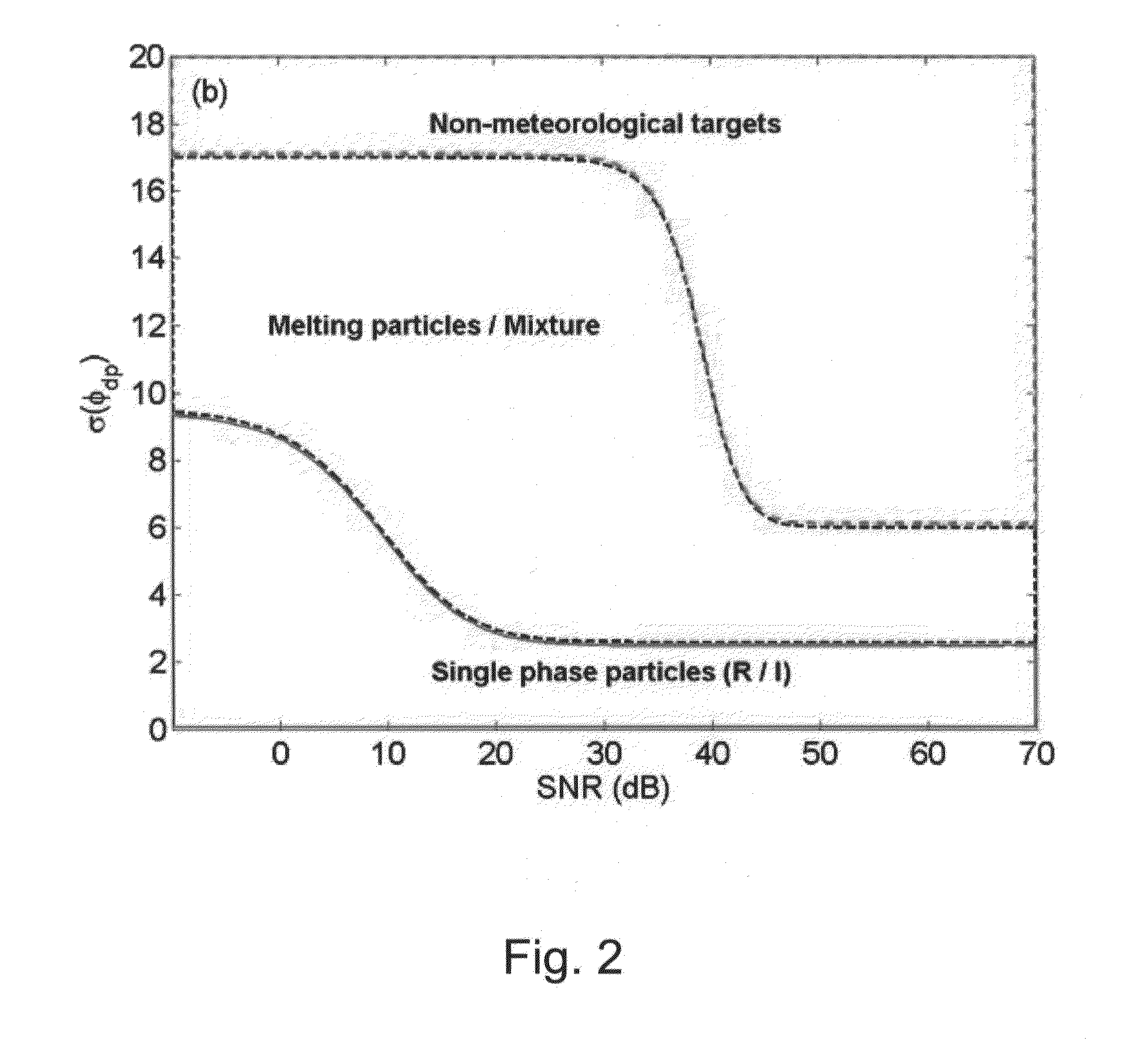Integrated rainfall estimation method using x-band dual-polarimetric radar measurement data
a rainfall estimation and radar measurement technology, applied in the field of meteorological information acquisition methods, can solve the problems of large variations of differential propagation phase variations, easy to be inaccurate, and inaccurate meteorological forecasting, etc., and achieve the effect of accurately and simply estimated
- Summary
- Abstract
- Description
- Claims
- Application Information
AI Technical Summary
Benefits of technology
Problems solved by technology
Method used
Image
Examples
Embodiment Construction
[0088]Hereafter, the present invention will be described in more detail through the embodiments, referring to the accompanying drawings.
[0089]The present invention is obtained as a result of a study conducted based on the data obtained from dual-polarization X-band radar (HYDROX) for a study on hydrometeorology conducted by the NOAA Earth System Research Laboratory (ESRL) during Hydrometeorology Testbed (HMT) West 2005 and 2006 season in California.
[0090]First, in relation to the classification of hydrometeors, the present invention newly uses a signal-to-noise ratio (hereinafter, interchangeably used together with SNR) as an input variable compared to a conventional method using variables affected by attenuation, such as horizontal reflectivity, differential reflectivity and the like for classification of hydrometeors. The reason for using the SNR is to distinguish variability of dual-polarimetric parameters caused by changes in the SNR. For example, in a rain region having a high ...
PUM
 Login to View More
Login to View More Abstract
Description
Claims
Application Information
 Login to View More
Login to View More - R&D
- Intellectual Property
- Life Sciences
- Materials
- Tech Scout
- Unparalleled Data Quality
- Higher Quality Content
- 60% Fewer Hallucinations
Browse by: Latest US Patents, China's latest patents, Technical Efficacy Thesaurus, Application Domain, Technology Topic, Popular Technical Reports.
© 2025 PatSnap. All rights reserved.Legal|Privacy policy|Modern Slavery Act Transparency Statement|Sitemap|About US| Contact US: help@patsnap.com



